- Images (32)
- Links (2)
- Agenda
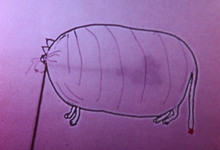
|
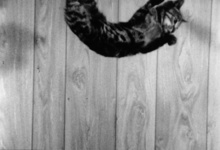
|
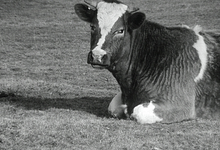
|
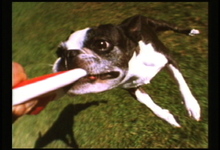
|
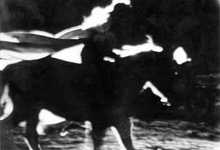
|
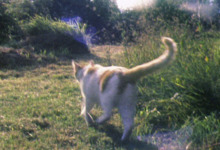
|

|

|
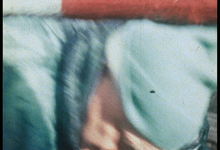
|
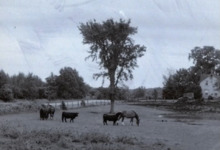
|

|

|

|

|

|
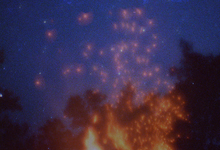
|
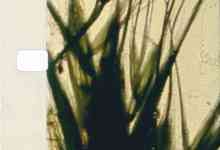
|

|
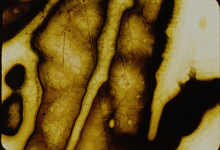
|
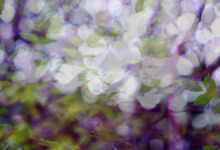
|
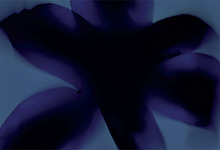
|
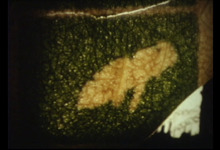
|
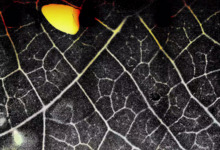
|
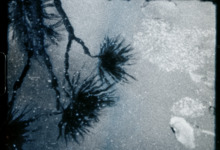
|
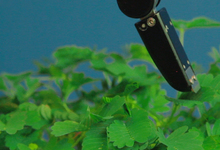
|
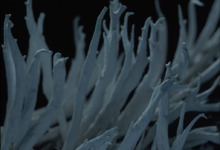
|
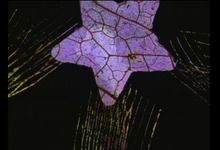
|

|
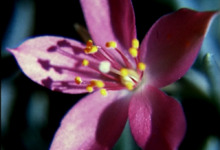
|
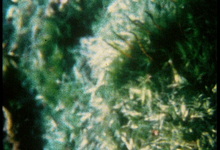
|
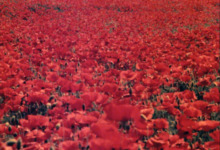
|

|
A series of screenings curated by Elio Della Noce (researcher in film studies) & Emmanuel Lefrant (Light Cone).
In an era marked by the scope of human actions on the rest of the living world (the Anthropocene), filmmakers engage in ecological practices that usher in a decentering of the privilege attributed to humans. Experimental filmmakers work to broaden our view of nature, and, little by little, their films achieve non-human perception: the "seeing" of an animal, from the house cat's knowing gaze to the multifaceted eye of a bee, or the "sensing" of a plant, from the photosynthesis of a dandelion to the sensitivity of a Mimosa pudica.
These experimental films, whose production requires ingenuity and poetry, invite us to discover new perceptive senses in animals and plants, to become enchanted, to renew our link with other forms of life while participating in contemporary philosophical and scientific research on these questions. The production methods of these films are the basis of a political ecology thanks to artisanal alternatives to productivism, to forming eco-responsible collectives and to an exploration of film processes like "phytography" and "ecoprocessing".
This series accompanies the publication of the collective book Expanded Nature - Écologies du cinéma expérimental, edited by Elio Della Noce and Lucas Murari and published by Light Cone Editions.
Free admission subject to availability (reservations recommended).
In the presence of Elio Della Noce and Anne Simon, director of research in literature at the CNRS, initiator of research in "zoopoetics."
This first screening is based on our most familiar experience of animal worlds. Cats and dogs, cows and horses get to know humans in an intimate relationship whose origin is the gaze. Through the decentered camera of experimental filmmakers, we discover what our pets see: shadows and reflections, the texture and granularity of objects, wild desires and memories, contained feelings and dreams, turning us towards the richness and depth of an "animal being." These films are as much "filmed diaries" by the filmmakers in their close and socio-natural environment: starting in their apartment, the park where a filmmaker brings their dog to play, their confrontation with a cow ruminating in the field, their exchange with two crows nesting in front of the window, all the way to the fortuitous encounter with a doe at the edge of the farm. To see the animal is not - a game of cat and mouse - to be seen by it?
Free admission subject to availability (reservations recommended on this link). Doors open at 2:45 pm.

|
CATS
by Robert BREER 1956 / 16mm / color / sound / 1' 19 |

|
NINE LIVES (THE ETERNAL MOMENT OF NOW)
by Jay ROSENBLATT 2001 / 16mm / color-b&w / sound / 1' 00 |

|
LA VACHE QUI RUMINE
by Georges REY 1969 / 16mm / b&w / silent / 3' 00 |

|
SID
by Jeff SCHER 1998 / 16mm / color-b&w / sound / 3' 15 |

|
MY NAME IS OONA
by Gunvor NELSON 1969 / 16mm / b&w / sound / 10' 00 |

|
MISS DAISY'S JARDIN WALK
by Miles MCKANE 2006 / HD / color / silent / 3' 10 |

|
LOLA
by Mike ROLLO 2008 / HD / b&w / sound / 2' 45 |

|
ANIMAL-ESTAR
by Bárbara BERGAMASCHI 2019 / HD / color-b&w / sound / 4' 00 |

|
FEDOR
by Eva-Maria SCHMID 1993 / HD / color / silent / 3' 00 |

|
ENDING 4
by Philip HOFFMAN 2022 / HD / color-b&w / silent / 2' 20 |

|
DEEP 1
by Philip HOFFMAN 2022 / HD / b&w / silent / 17' 21 |
In the presence of Elio Della Noce and Benoît Grison, biologist and sociologist of science, specialist in behavioral neuroscience, ethnozoology and epistemology of life sciences.
After having explored the intimacy of the gaze of familiar animals, the filmmakers turn here to the complexity of insect perception. Experimental cinema and its "synaesthetic" tendency offer the opportunity to play with a vast perceptive repertoire: shooting devices (homemade pinhole cameras, magnifying glasses), "camera-less" animation techniques (silver collages, "phytography"), environmental sound recordings, etc. This set of techniques conceived by the filmmakers touches on the wide perceptive field of insects and expresses their strange way of creating a compound of the living. These films thus translate, through their own craft, the frequencies, shapes and colors of images perceived by a bee, the electromagnetic radiation captured by the oculars of a caterpillar, the photoluminescence of fireflies and the dream cosmology of a moth. Of special note, Karel Doing's The Mulch Spider’s Dream (2018) breaks out of the exclusive reign of insects and opens up to the molecular perception of a "mulch spider."
Free admission subject to availability (reservations recommended on this link). Doors open at 2:45 pm.

|
CHRYSALIS
by COLECTIVO LOS INGRÁVIDOS 2020 / HD / color / sound / 5' 36 |

|
MY LIFE AS A BEE
by Robert SCHALLER 2002 / 16mm / color / silent / 6' 00 |

|
LOOKING GLASS INSECTS
by Charlotte PRYCE 2012 / 16mm / b&w / silent / 4' 00 |

|
PARABLE OF THE TULIP PAINTER AND THE FLY
by Charlotte PRYCE 2008 / 16mm / color / silent / 3' 50 |

|
PHOTURIS
by Peter MILLER 2013-2014 / 16mm / color / silent / 6' 10 |

|
MOTHLIGHT
by Stan BRAKHAGE 1963 / 16mm / color / silent / 4' 00 |

|
NOT (A) PART
by Vicky SMITH 2019 / 16mm / color-b&w / sound / 6' 00 |

|
THE MULCH SPIDER'S DREAM
by Karel DOING 2018 / 16mm / color / sound / 14' 01 |
In the presence of Elio Della Noce and Emmanuel Lefrant.
For this third and last screening, we will leave the animal world and turn to the sentience of plants. From the seed, the petiole, the petals and the leaves, how do filmmakers disseminate this "plant intelligence" that is embodied in a variety of perceptive senses? For this, experimental cinema offers surprising correspondences between the biochemical processes of the plant and the technical processes of film medium. From the photosynthesis of a leaf to the "phytogram" that prints it in negative on celluloid, from the "collage-herbarium" to the in-camera animation techniques of "cinematographic bouquets," from the "photograms" of petals to the photosynthetic properties that preside over the perception of their colors. This program calls for a meditation on our interrelation with plants, while trying not to offend their sensibilities!
Free admission subject to availability (reservations recommended on this link). Doors open at 2:45 pm.

|
GESTURES TOWARD PLANT VISION
by Sarah ABBOTT 2021 / HD / color / sound / 10' 09 |

|
FLOWERS #1
by Alexander GRANGER & Philip HOFFMAN 2022 / HD / color / silent / 3' 06 |

|
GRAND PARK-PHOTOSYNTHESIS
by Robbie LAND 2017 / HD / color / silent / 7' 00 |

|
PHSYCHÈ TROPHIKÈ
by Bruno VARELA 2020 / HD / b&w / sound / 2' 15 |

|
PURKYNE'S DUSK
by Helena GOUVEIA MONTEIRO 2020-2021 / HD / color-b&w / silent / 9' 09 |

|
THE PUDIC RELATION BETWEEN MACHINE AND PLANT
by Pedro NEVES MARQUEZ 2016 / HD / color / sound / 2' 30 |

|
LICHEN
by Lisa JACKSON 2019 / HD / color / sound / 12' 00 |

|
BOTANICOLLAGE ON FRISCO BAY
by Caryn CLINE 2017 / HD / color / sound / 3' 46 |

|
THE GARDEN OF EARTHLY DELIGHTS
by Stan BRAKHAGE 1981 / 16mm / color / silent / 1' 50 |

|
GLIMPSE OF THE GARDEN
by Marie MENKEN 1957 / 16mm / color / sound / 4' 00 |

|
TRACK MOSS BYPASS
by Miles MCKANE 1987 / 16mm / color / silent / 7' 00 |

|
LES COQUELICOTS
by Rose LOWDER 2000 / 16mm / color / silent / 2' 30 |

|
A PERFECT STORM
by Karel DOING 2022 / 16mm / color-b&w / sound / 3' 00 |
| address |
Muséum national d'Histoire Naturelle Auditorium de la Grande Galerie de l’Évolution - 36 rue Geoffroy Saint-Hilaire 75005 Paris France |
|---|---|
| metro | Gare d’Austerlitz (line 5) / Censier Daubenton (line 7) / Jussieu or Gare d’Austerlitz (line 10) |
| related links |
Muséum national d'Histoire naturelle
Facebook event |